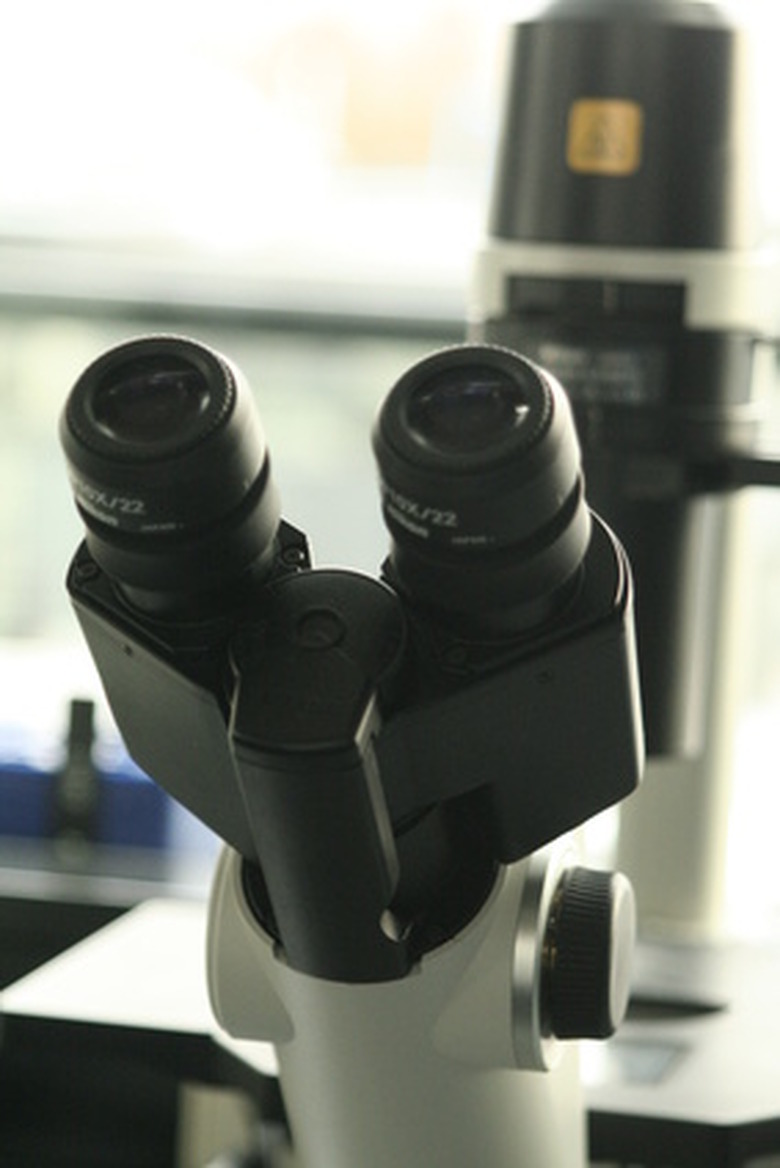The Comparison Of A Light Microscope To An Electron Microscope
The world of microorganisms is fascinating, from microscopic parasites like the liver fluke to staphylococcus bacteria and even organisms as minuscule as a virus, there is a microscopic world waiting for you to discover it. Which type of microscope you need to use depends on what organism you are trying to observe.
The Compound Light Microscope
The Compound Light Microscope
The compound light microscope uses optical lenses to bend light and magnify microscopic specimens. The lenses used are the objective lenses, which have varying magnifications, and ocular lenses, which have a fixed magnification. These microscopes are great for observing single-celled organisms such as tiny parasites and many types of bacteria.
Maxium Magnification with a Compound Microscope
Maxium Magnification with a Compound Microscope
To determine the total magnification when using a compound microscope, multiply the magnification of the objective lens by the ocular lens. For example, if you are observing a specimen using a 10 times magnification objective lens with a ten times magnification ocular lens, you are seeing the specimen at 100 times magnification. Because of resolution (the ability to distinguish between two separate points) a compound microscope has a maximum observable magnification of 2,000 times.
The Scanning Electron Microscope.
The Scanning Electron Microscope.
Instead of using lenses and light to magnify a specimen, a scanning electron microscope uses electrons to create a magnified image. The specimen is placed at the bottom of a chamber and all the air is pumped out of the chamber, making it a total vacuum. Next, an electron beam is fired down the chamber, where it bounces off a series of special mirrors until the beam is focused on a single spot on the specimen. Then a series of scanning coils move this focused electron beam across the specimen. The electron beam bumps off the electrons that already exist on the specimen. When these electrons are knocked off the specimen, the electron detector picks them up, and then they are amplified. The amplifier converts these electrons into an image, which is displayed on a monitor.
Total Magnification with a Scanning Electron Microscope
Total Magnification with a Scanning Electron Microscope
Wavelengths influence resolution. Because a compound microscope uses light, its resolution is limited to .05 micrometer. A micrometer is one millionth of a meter. Electrons, however, have a much smaller wavelength, and therefore the total magnification of a scanning electron microscope is 200,000 times with a resolution of .02 nanometer. A nanometer is a billionth of a meter.
Choosing Between the Two
Choosing Between the Two
When trying to choose between a compound microscope and a scanning electron microscope, think about what you are trying to do and the resources available. The scanning electron microscope is a wonderful piece of technology but has a few distinct drawbacks. The first is cost. A scanning electron microscope can cost up to $1 million. This doesn't make it the ideal microscope for the home enthusiast. The second drawback is in the use. The proper use of a scanning electron microscope takes years to master. A compound microscope, on the other hand, is relatively inexpensive, takes very little training to operate, and is the perfect size for the professional and amateur microbiologist.
Cite This Article
MLA
Boles, Kelley. "The Comparison Of A Light Microscope To An Electron Microscope" sciencing.com, https://www.sciencing.com/comparison-light-microscope-electron-microscope-6296323/. 24 April 2017.
APA
Boles, Kelley. (2017, April 24). The Comparison Of A Light Microscope To An Electron Microscope. sciencing.com. Retrieved from https://www.sciencing.com/comparison-light-microscope-electron-microscope-6296323/
Chicago
Boles, Kelley. The Comparison Of A Light Microscope To An Electron Microscope last modified March 24, 2022. https://www.sciencing.com/comparison-light-microscope-electron-microscope-6296323/
